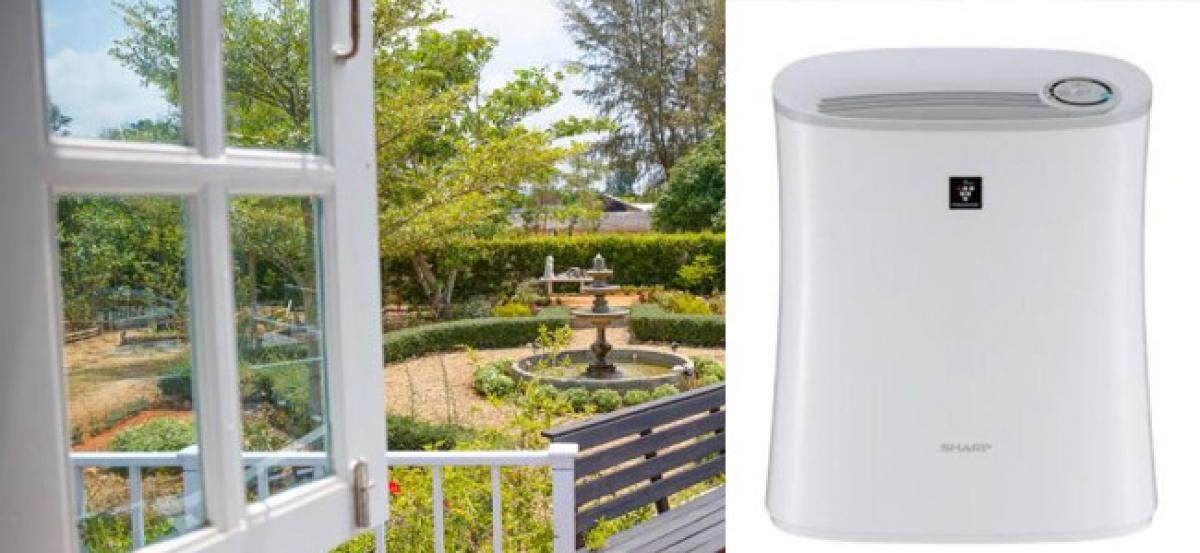Live
- Somishetty takes charge as KUDA chairman
- Foundation partners with BBMP to revamp Bengaluru’s iconic Church Street
- World Diabetes Day observed at Gem Care Kamineni Hospital
- Rural students told to pursue higher education
- Fishery activities get a big boost in TDP budget
- Today’s welfare measures aim to empower: Nirmala Sitharaman
- Six scholars, including two women, win Infosys Prize 2024
- Gurukula zonal level sports meet concludes
- Vagdevi Jr College student selected for national basketball tourney
- Maoist area committee member arrested
Just In
Air-conditioned spaces causing trapping of toxic gases & VOCs in Indoor Air can be fatal


Unlike food and water, where we can choose what we consume, in case of AIR, it is entirely dependent on the surroundings!! For breathing we transact with the environment or our
Unlike food and water, where we can choose what we consume, in case of AIR, it is entirely dependent on the surroundings!! For breathing we transact with the environment or our surroundings approximately 20000 times a day. The situation around us determines the quality of air inhaled.
SURPRISED? Remember last time when you came across a bad smell or a person sneezing, you did tend to move away and cover your nose or even tried to slower down your breath?
Unconsciously we all do this and try to avoid such bad substances from entering along with air.
The smell, gases or infections which we can detect through our sense organs are quite limited. While most of the gaseous pollutants commonly found indoor are out of our perception and as a result we blissfully ignore them.
While most of our time is spent in compact air conditioned spaces, we breathe mostly stale and stuffy air recirculated by the air-conditioners.
Inadequate ventilation, lack of sunlight and increased humidity levels can increase proliferation of pollutants inside our living spaces. Apart from gaseous substances entering from outdoor, there are several sources of generating hazardous substances indoor from our regular household activities. For example kitchen is a large source of Nitrogen Dioxide and even Carbon Monoxide. Mosquito repellents, cleaning products, paint fumes, toilet, pets, gas geysers and even the furniture can generate large volumes of gaseous substances which are not detected by our sense organs. As a result these invisible threats constantly and easily enter the airway creates havoc and thus causing several respiratory disease.
How to reduce these gaseous substances and VOC in our Indoor space?
It is advisable to properly ventilate the cooking area in Indian kitchens where combustion fumes are higher than western cooking setups. A good exhaust fan can also help eliminate the gas. Burning lanterns or charcoal in a closed room during winters should be avoided. In addition, some Air Purifiers claim to reduce these gaseous substances. But it is of utmost importance to check whether these devices are validated and have the potential to remove toxic gases.
An advanced technology like Plasmacluster technologycan neutralize Carbon Monoxide and many other harmful gases and VOC present in the air we breathe through the following process of unbinding-
CARBON MONOXIDE (CO) + PLASMACLUSTER O & H = CARBON DIOXIDE (CO2) & WATER (H2O)
Plasmacluster has also been proven to reduce airway inflammation among children with Asthma and Allergy thus making it a natural method of prevention from respiratory illnesses.
With each passing day, the pollution levels are increasing and there is no escape from deadly pollutants entering our lungs. If we are able to reduce the intake or volume of pollutants entering our body, ailments can also be reduced. It’s time we take charge of the quality of air we breathe indoors by installing an Air Purifier inside offices and homes where we spend most of our time.
By: Shuvendu Mazumdar
National Manager- SHARP Air Purifier Business

© 2024 Hyderabad Media House Limited/The Hans India. All rights reserved. Powered by hocalwire.com






